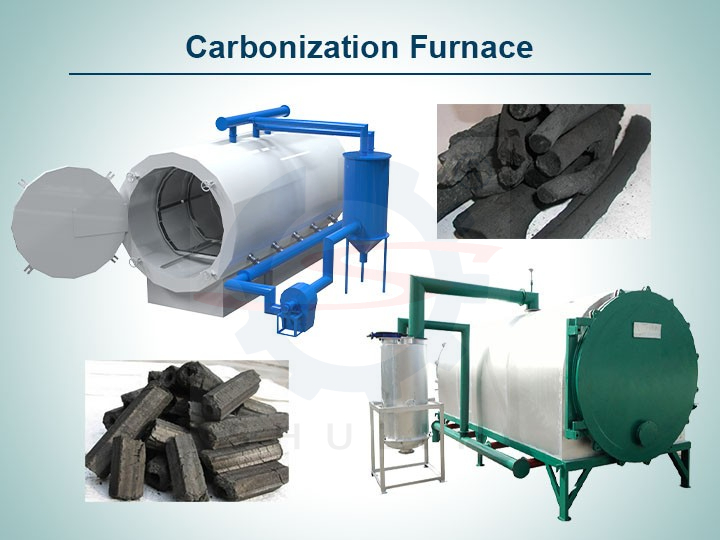The horizontal carbonization furnace is a device that can carbonize raw materials. It is an essential machine in the process of coal production. It is widely used in charcoal processing plants because of its simple operation and high safety. There are many types of carbonization furnaces, including continuous carbonization furnaces and hoisting carbonization furnaces.
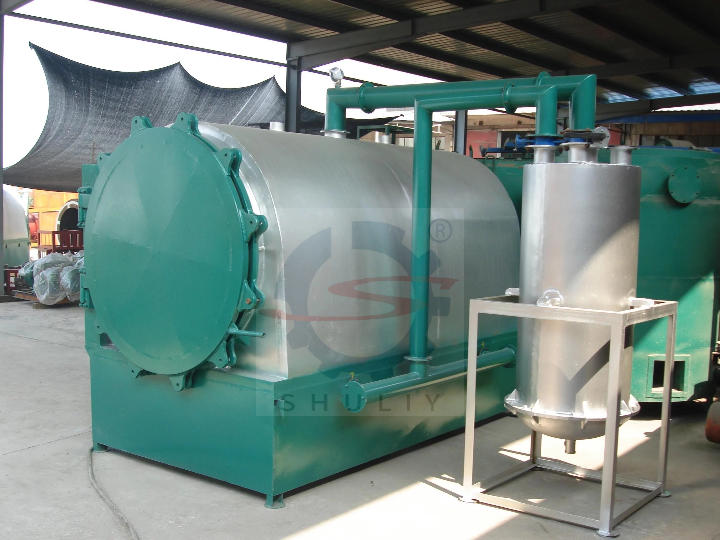
Raw materials of horizontal carbonization furnace
This carbonization furnace equipment can process many kinds of raw materials, such as wood, branches, roots, bamboo, sawdust/biomass briquettes, corn cob, coconut shell, nutshell, and other raw materials. In addition, the raw material of the carbonization furnace can also be processed wood chips, which are then carbonized.
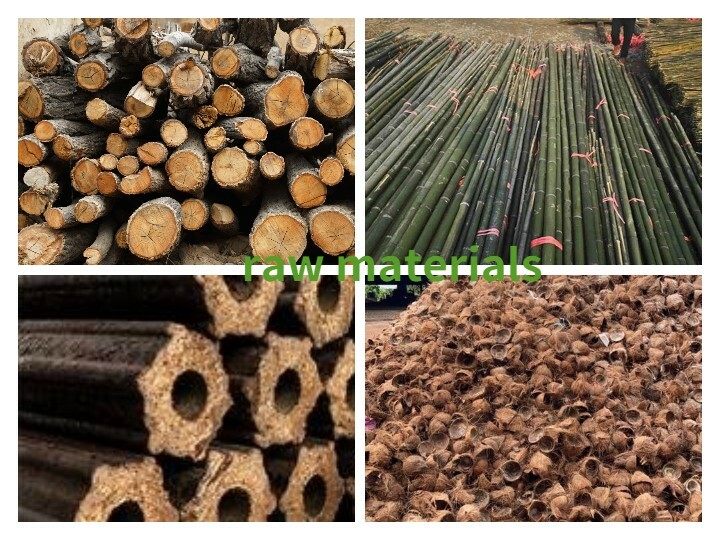
The principle of hardwood log charcoal machine
It mainly adopts the method of dry distillation carbonization and uses the carbon monoxide, methane, hydrogen, and other combustible gases generated in the carbonization process to separate through the flue gas purification system of the carbonization furnace, and separate wood tar, wood acetic acid, etc. to obtain combustible gases. Then pass into the burner for full combustion, and heat the high-temperature carbonization pipeline. At this time, the temperature is generally controlled at about 600°. The carbonization pipeline carbonizes and decomposes the material, and then burns through the recovery pipeline, flue gas purification system, and fuel burner. For pipeline heating, the carbonization furnace is fully self-sufficient, saving fuel.
Effect of carbonization on wood properties
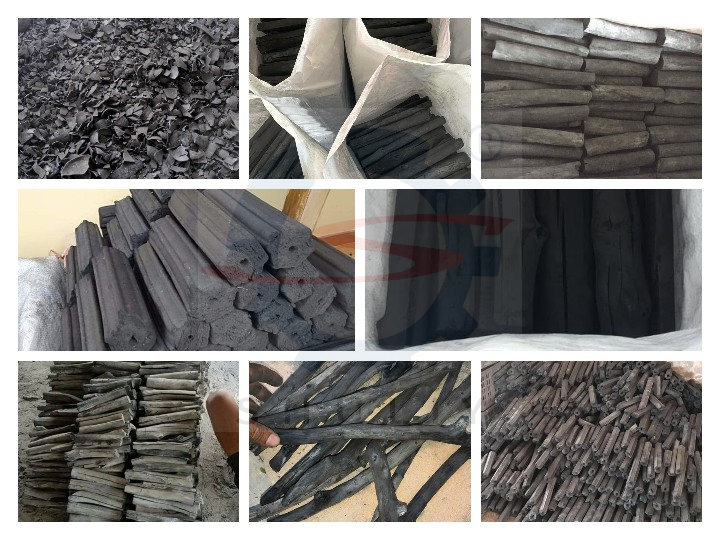
1. Density reduction
Mainly from the partial loss of hemicellulose. Most studies show degradation of 5-8% hemicellulose with little sacrifice in structural strength.
2. Strength increases
When carbonized at the proper temperature, the strength of the wood will increase, but excessive, overheated carbonization will reduce the strength.
3. Decreased moisture content
All wood absorbs moisture from the atmosphere, is heated to high temperatures, and loses most of its moisture.
4. Color deepening
As the carbonization temperature increases, the color becomes darker.
5. Improvement of anti-corrosion ability
The possible reason why carbonization improves the anticorrosion performance of wood is that during the carbonization process, the wood components are changed, which cuts off the source of nutrients needed for the survival of fungi; at the same time, the reduction of moisture content inhibits the growth of fungi and improves the corrosion resistance. improve.
Structure of horizontal carbonization furnace
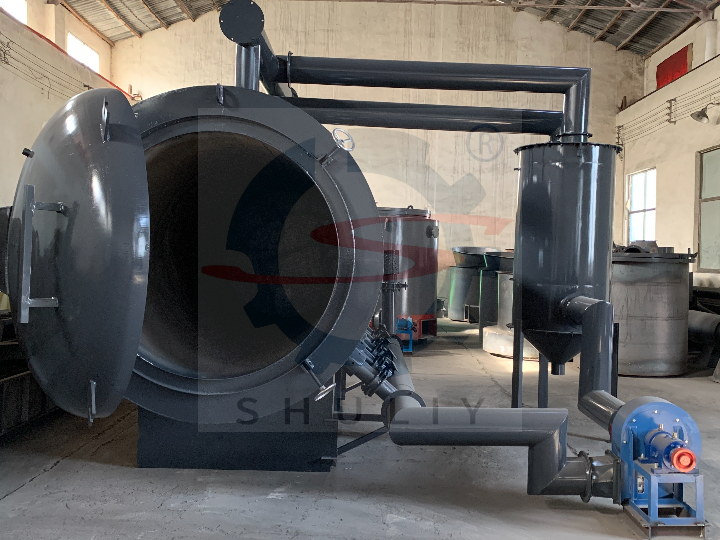
The furnace includes a furnace body, a furnace cover, a heating chamber, and an exhaust pipe. A carbonization liner is set in the furnace chamber of the furnace body, and a cover is installed on the carbonization liner. The horizontal carbonization furnace has good sealing performance and ensures the temperature is No lost during carbonization.
Parameters of hardwood log charcoal machine
| Type | Capacity | Weight | Size |
| SL-HC1300 | 900-1200kg/12-14h | 2500kg | 3*1.7*2.2m |
| SL-HC1500 | 1500-2000kg/12-14h | 4000kg | 4.5*1.9*2.3m |
| SL-HC1900 | 2500-3000kg/12-14h | 5500kg | 5*2.3*2.5m |
Detailed carbonization process
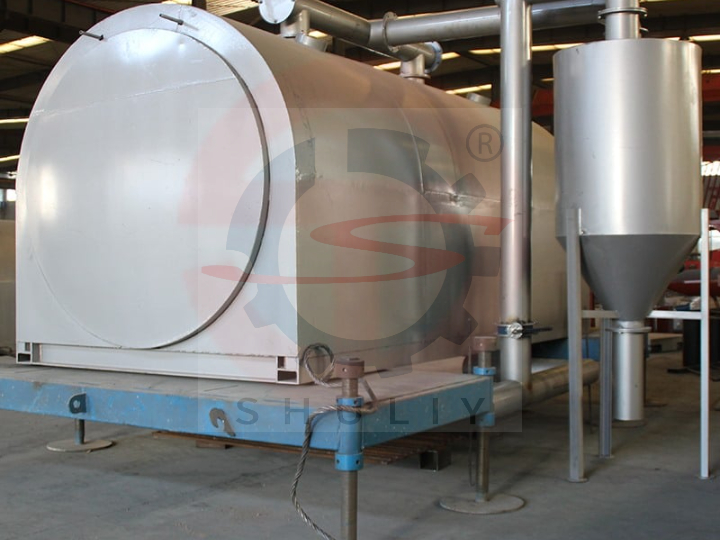
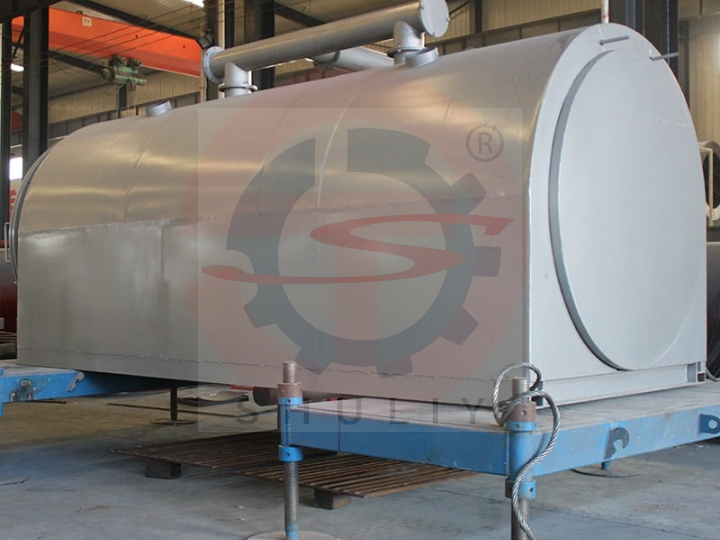
(1) First place the material to be carbonized in the furnace body, and then cover and seal the furnace cover. Start heating up. When the temperature reaches 170-200 degrees, the drying stage of the material begins.
(2) When the temperature reaches 170-200 degrees, continue to heat on a small fire, so that the temperature in the furnace reaches about 340 degrees. This stage takes about 2 hours, and this stage is a pyrolysis process.
(3) When the temperature reaches 340 degrees, it is necessary to continue to heat on a small fire and let the temperature rise to about 380-400 degrees. At this time, the material is rapidly decomposed in the furnace, and liquids such as wood tar and wood vinegar are discharged at the same time. In addition, combustible gases such as methane and ethylene are also generated, and these combustible gases can be returned to the bottom of the furnace through the purification system. The internal temperature is raised to about 500-800 degrees so that the material is dry-distilled into charcoal rods under high-temperature conditions.
(4) When the smoke volume of the cigarette outlet is obviously reduced and faded, it is necessary to turn off the fire and seal the fire. At this point, the furnace carbonization is over. Then start to cool down.
Advantages of horizontal carbonization furnace
- Environmental protection: all the precipitation gas is used, the combustion exhaust gas can be discharged up to the standard, and there is no ammonia-containing cooling wastewater discharge.
- High efficiency: The sealed carbonization furnace is tightly sealed, which can ensure that the temperature in the furnace is not emitted and the carbonization time only takes 4-5 hours, which improves production efficiency.
- Cost-saving The carbonization furnace itself has pipes, which can divert the combustion gas to the combustion area of the carbonization furnace for the carbonization process.
- Convenient and safe. There are trolleys for quick material changes.
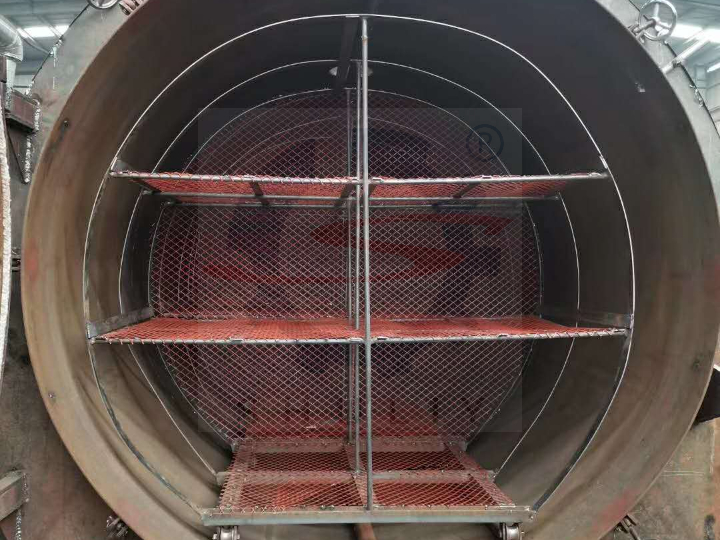
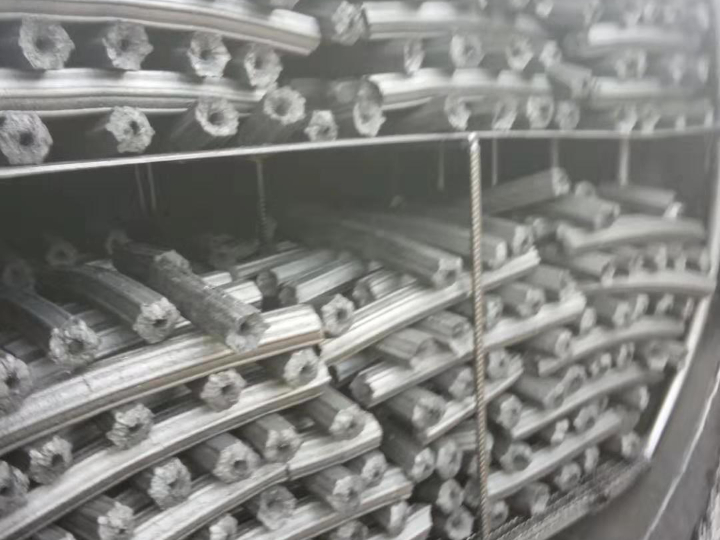
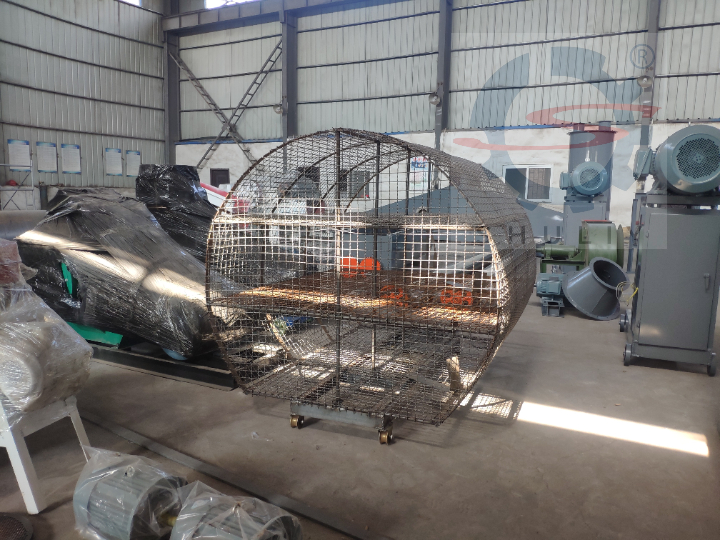
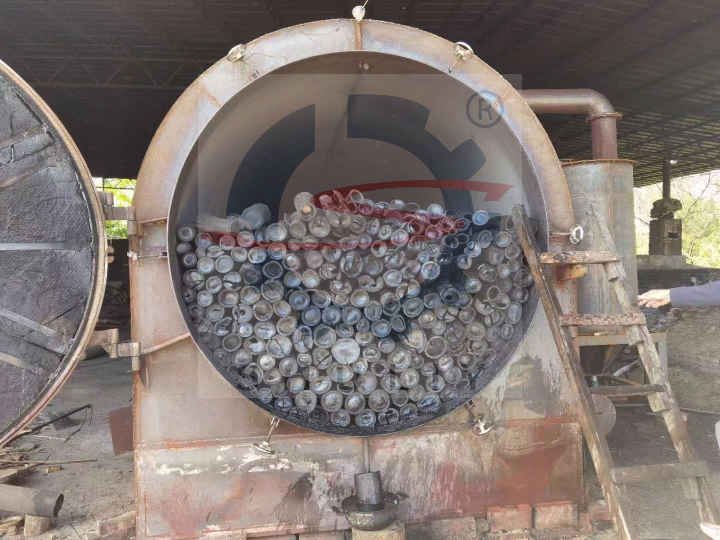
How to use the carbonization furnace
The carbonization furnace should first find a flat piece of land and put it in place. Open the furnace door and put in the raw materials that need to be carbonized. Try to fill the furnace as much as possible. In the next step, use wood to start the fire at the bottom, and wait until the temperature gauge in the furnace rises to 150- At 200 degrees, the inside of the furnace will emit gas, and the gas will spontaneously ignite when the gas enters the combustion part through the furnace’s own pipeline; after 4-5 hours of carbonization process, the internal combustible gas is exhausted.
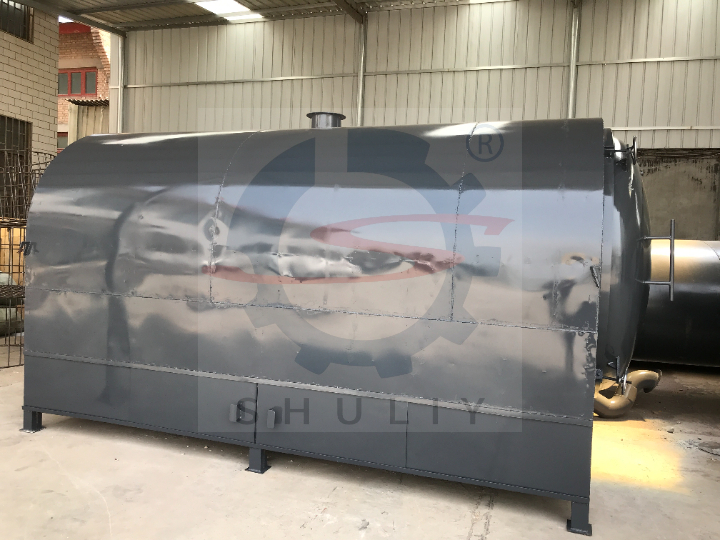
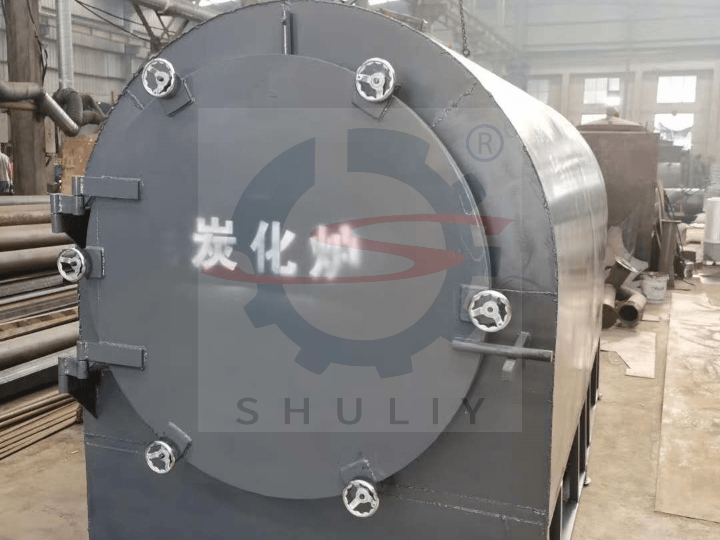

At this time, the flame will become smaller and smaller until the fire goes out. After the carbonization is completed, the next step is to use the furnace’s own spray system to properly pour some water (or wait until the furnace surface temperature drops below 50 degrees), and then the furnace door can be directly opened to discharge the charcoal. It should be noted that the furnace door should not be opened until the temperature drops below 50 degrees without drawing water, otherwise the carbonized raw materials in the furnace will spontaneously ignite due to excessive temperature.

